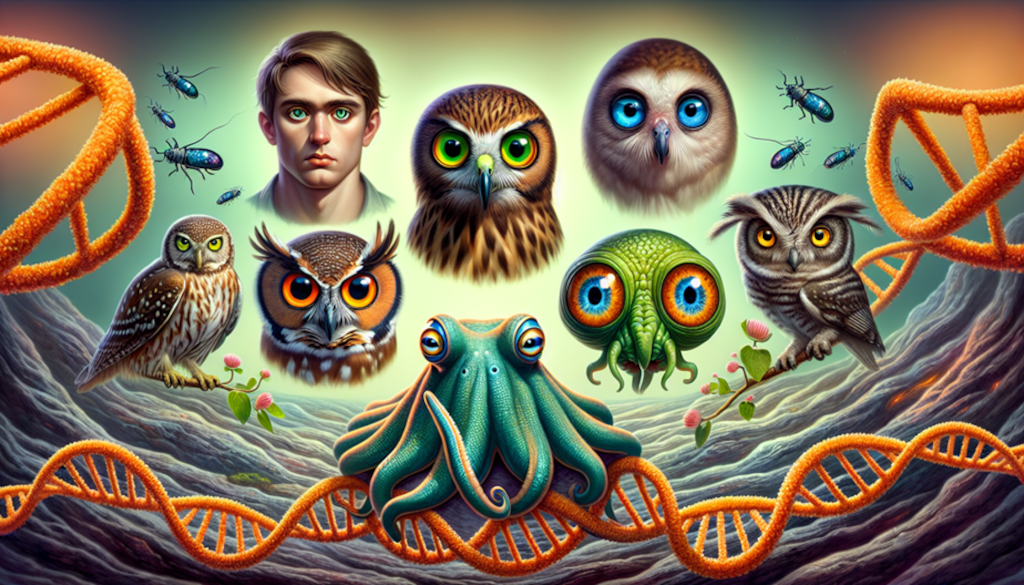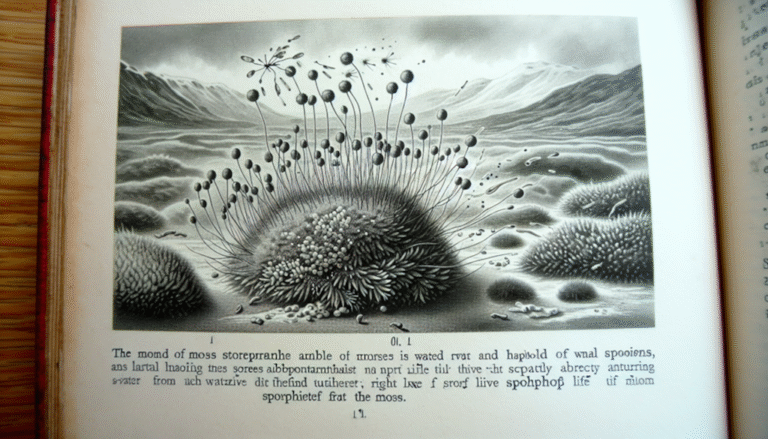Imagine seeing the world with just a pixel of light. That was the reality for Earth’s earliest animals—creatures with nothing more than basic photoreceptors that sensed brightness but couldn’t form images.
Fast-forward a few hundred million years, and suddenly, we have hawks spotting prey from miles away, octopuses reading cues with alien precision, and humans binge-watching Netflix in full HD. But here’s the twist:
Two-eyed animals didn’t evolve just once. Nature reinvented this trick again and again—at least 40 times.
Wait… eyes evolved independently?
Yes. And not just once—in fact, the camera-type, image-forming eyes like those in humans, owls, and octopuses have evolved separately in at least 40 different evolutionary branches.
That might sound wild, but it makes perfect sense. Across millions of years and countless environments, having eyes—particularly a matched pair that can feed the brain overlapping visual cues—proved so useful that evolution kept coming back to it. Each time, nature used slightly different blueprints from the same ancient toolbox.
A shared DNA toolkit, but different results
You might think all eyes came from a common ancestor, but that’s only partially true. Most animals share a core set of eye-building genes, like the famous PAX6 gene—think of it as nature’s “starter kit” for making an eye. But what did each lineage do with that kit? Completely different stories.
- Vertebrates (like humans, birds, and fish) and cephalopods (like octopuses and squids) both have camera-like eyes. But these developed independently, using the same core genes to build different eye structures from the ground up.
- Owls, primates, and even some insects like praying mantises developed binocular vision—two forward-facing eyes with overlapping fields of view—often to support depth perception and hunting behavior.
- Some lineages, like arthropods, evolved compound eyes with multiple lenses, while others went for large, single-lens designs.
The science backs it up: 40+ independent origins of complex eyes
In 1994, evolutionary biologist Dan-Eric Nilsson and Susanne Pelger showed through simulation that a simple light spot could evolve into a complex eye in less than 400,000 generations—just a blip in evolutionary time.
Experiments like theirs helped explain why eyes evolved so many times: they offered enormous survival advantages, and they were surprisingly quick to develop—if evolution chose the right path.
Further studies estimate that complex image-forming eyes arose between 40 and 65 separate times throughout evolutionary history. And two-eyed setups with binocular vision? Those have independently shown up in a select few, like vertebrates and insects, but not always for the same reasons.
So, what’s the evolutionary trade secret?
The real secret? Evolution doesn’t start from scratch. It recycles ideas. The genes were already there—it was just a matter of tweaking how they were used. Think of it as nature remixing its greatest hits to score a few survival wins.
This idea, known as convergent evolution, explains how similar traits can evolve in unrelated species. In this case, “two eyes facing forward” emerged repeatedly because it works incredibly well—whether you’re a monkey leaping through branches, an owl diving on prey at midnight, or a cuttlefish navigating coral reefs.
The bottom line
When we peer into the eyes of an owl or a squid, we’re not just looking into another species—we’re seeing one of evolution’s favorite solutions, discovered over and over again. Nature didn’t invent image-forming, two-eyed vision once. It did it dozens of times, in different ways, shaped by other needs.
So next time you make eye contact with your cat or a dragonfly, remember: their eyes—and yours—are part of a deep, ongoing evolutionary experiment. One that nature just can’t stop trying.




Leave a Comment